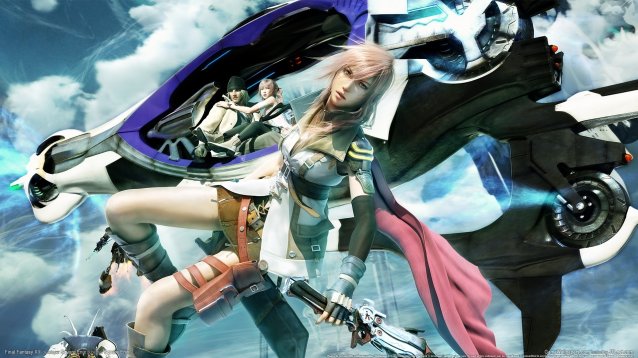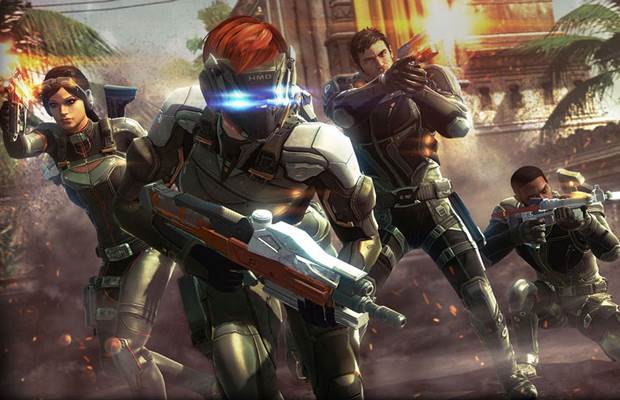


The JRPG was never in decline, and it never lost its popularity. That’s right, the genre still exists today, and it’s arguably still at the forefront of the industry, although you may not know it. Namco Bandai’s Souls series and Capcom’s Dragon’s Dogma – to name just two – have both been recent releases that have gained huge success in the Western world; proving that games developed in Japan still hold great importance.
Right now, anyone past the age of 20 is probably laughing or seething through the teeth at the thought of either of the above being a JRPG, and even though it is technically correct, neither title is a traditional member of the genre. Semantics over though, this article is indeed about the historical roots of Japan’s greatest export, and why it seems to have all but vanished in recent years.
If you ask most gaming veterans what they think of when they hear the term JRPG, chances are, they’re going to say one of the following: turn-based combat, frequent random encounters, a sprinkling of comical translation and a lot of grinding. All of these form the bread and butter of what defines the Japanese RPG.
But if that’s what makes the genre so memorable, surely we should be happy that it appears to be verging on extinction? Well, if you hated grind, then yes is the most likely answer, but the now niche genre is the forefather of almost every Western RPG you play today. Breath of Fire, Dragon Quest and Final Fantasy formed some of the earliest gaming memories for many; and believe it or not, whilst they may be dated now, they were cutting edge at the time.

Regardless of how fondly you may remember those gems though, there’s no denying that the mechanics that defined the early JRPG’s would appear awfully dated to today’s young’uns; and if the formula had remained unchanged, there would be little wonder as to why the genre died out.
That’s simply not the case though. Both Mistwalker’s Lost Odyssey and Square Enix’s The Last Remnant bucked the trend of what to expect from a Japanese developer. Both games featured more interactivity in the perceived stilted turn-based format and their creative narratives certainly helped further to invigorate a formula wholly assumed to be stale in Western media. Hardly surprising then that both managed to sell copies well into the six-figure region; not much in comparison to Grand Theft Auto or the Elder Scrolls series but still numbers not easily scoffed at.
So if an audience still exists, and Japanese developers understand the need to innovate to a certain extent, why are we seeing the land of the rising sun diverge so radically from gameplay that still holds merit?
The obvious answer – but not the only one – is Westernisation. Once upon a time, believe it or not, Japan was the videogame superpower, a title that has since been claimed by Europe and North America. In a time when PC gaming was waning in popularity, Sega, Nintendo and Sony – all Japanese companies – dominated the home console market and the Xbox was but a twinkle in Microsoft’s eye, it was the Eastern world that dominated the industry.

Today, the opposite couldn’t be more true, and it’s because of this shift that Japanese developers have arguably started trying to appeal to Western audiences by excising everything that made their creations unique in the first place.
Appealing to a mass audience is hardly a novel idea either. The question is a topic touched upon frequently when native publications interview Japanese developers. Interestingly, the response to such a query is usually one of mild discomfort and the assurance that any Western themes present are purely for design reasons. It works both ways too. Microsoft’s release of the Xbox 360 in Japan saw them try their hardest to get the country’s gaming population on board by releasing exclusives like Blue Dragon, with the sole intent of making games that would appeal to an audience away from the Western world. But unlike the almost total shunning of the first-person shooter genre by Eastern audiences, Blue Dragon was also received well enough by critics here too.
Ultimately, it’s this guys opinion - whatever that’s worth - that the JRPG never lost its universal appeal, but the combination of mainstream media accepting gaming in the West and Japanese developers trying to cater to all audiences has resulted in a hybrid experience: vis-à-vis Final Fantasy XIII and its successors. Square Enix’s overhaul of the series’ mainstays has arguably hurt its sales in this part of the world, and whilst XIII is by no means bad, the possibility that the series isn’t as popular as it once was because it has changed too much is very real.
The concern is that other Japanese developers – along with many others – see the name Final Fantasy as being synonymous with old-school, traditional JRPG structuring, and mistake its fall in popularity as a sign that the whole genre is in freefall.
Regardless of what the concrete reasons for such changes are, the turn-based and dungeon-crawling JRPG is still very much alive. You may have to look harder than before (and in different places) for such a thing, but rest assured that there is still an audience for such games, and one can only hope that Japanese developers know it.




 Metal Gear Solid V: The Phantom Pain Guide: How To Unlock Cyborg Ninja (Gray Fox) Outfit For Big Boss
Metal Gear Solid V: The Phantom Pain Guide: How To Unlock Cyborg Ninja (Gray Fox) Outfit For Big Boss FIFA 16 Ultimate Team: How to Make More Coins for Your Ultimate Team
FIFA 16 Ultimate Team: How to Make More Coins for Your Ultimate Team The Witcher 3 Monster Guide: How to Easily Beat the Hym
The Witcher 3 Monster Guide: How to Easily Beat the Hym Fuse Review
Fuse Review What is Destiny? Hints, Tips and Cheats Guide
What is Destiny? Hints, Tips and Cheats Guide